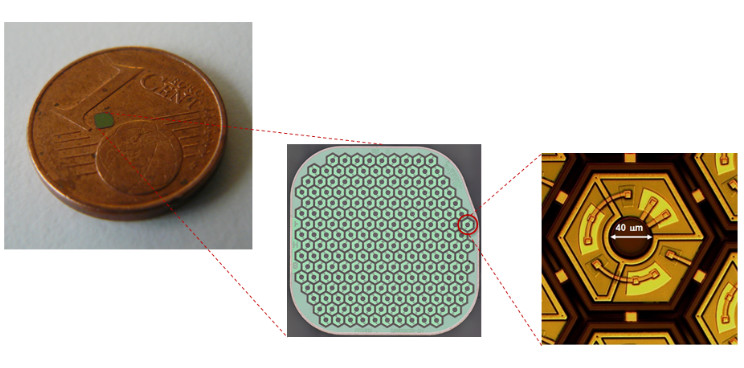Newsletter Signup - Under Article / In Page
"*" indicates required fields
Update (26/01/2018): A first patient was implanted with Pixium Vision’s PRIMA bionic device. A month after implantation, the device was activated and the patient, who suffered from severe vision loss due to age-related macular degeneration (AMD), reported “a first perception of light from the central zone where there was none previously,” according to principal investigator Dr. Le Mer.
The patient will now enter a 6-month re-education phase to learn to properly interpret the light signals from the PRIMA implant.
Originally published on 20/10/2017
Pixium Vision has received approval in France to start a clinical trial to restore sight in patients with age-related macular degeneration (AMD).
The French Pixium Vision, one of the companies of serial biotech entrepreneur Bernard Gilly, is ready to start a clinical trial with PRIMA, a miniature, wireless, sub-retinal implant designed to restore vision. The trial will recruit 5 patients with vision loss due to advanced dry age-related macular degeneration (dry-AMD) to test tolerance to the device and the recovery of sight after 6 and 36 months. CEO Khalid Ishaque stated in a press release that the first patient will be implanted before the year ends.
The PRIMA implant consists of a tiny microchip — 2mm long and 30 microns thick — whose electrodes can detect infrared signals and transform them into electrical impulses that are transmitted to the brain through the optic nerve. The images are recorded through a mini-camera integrated into external glasses and transformed into wireless infrared signals to activate the implant.
If effective, this technology could be transformative to the over 4 million people suffering from AMD that do not have any treatment options available. Pixium is already discussing with the FDA the possibility of running the trial in the US too, and is planning to use the implant to treat vision loss due to retinitis pigmentosa in the future.
Image via Pixium Vision
Are you interested in eye disease R&D?







